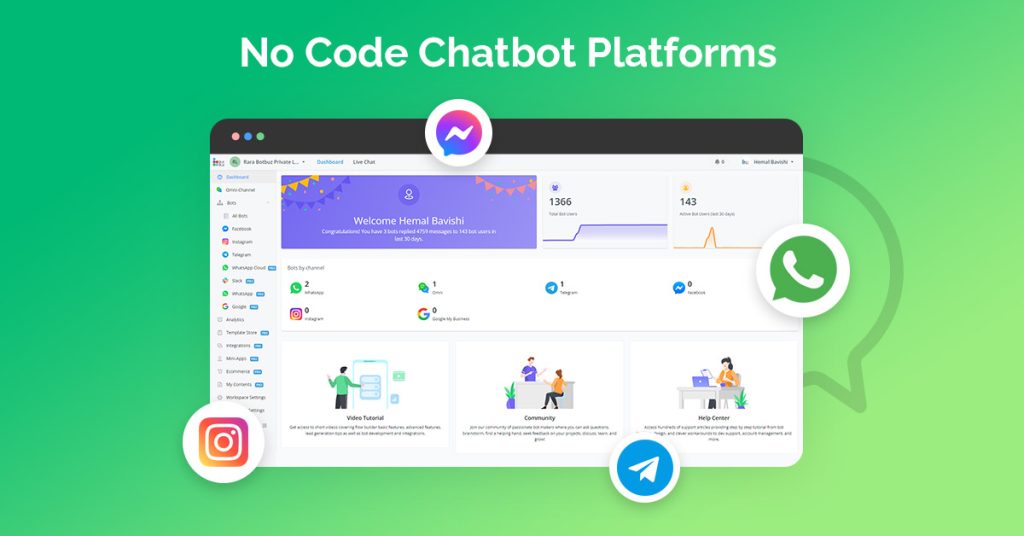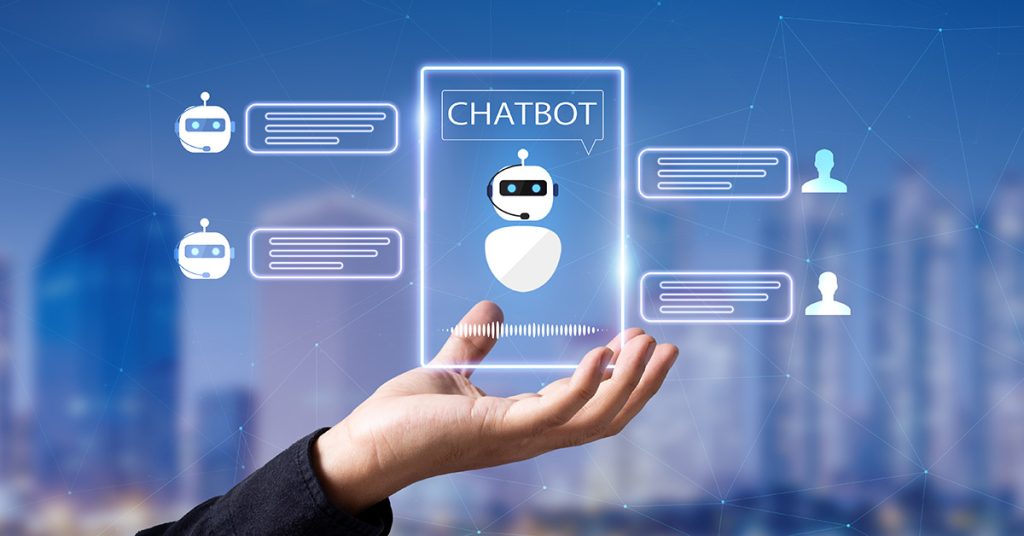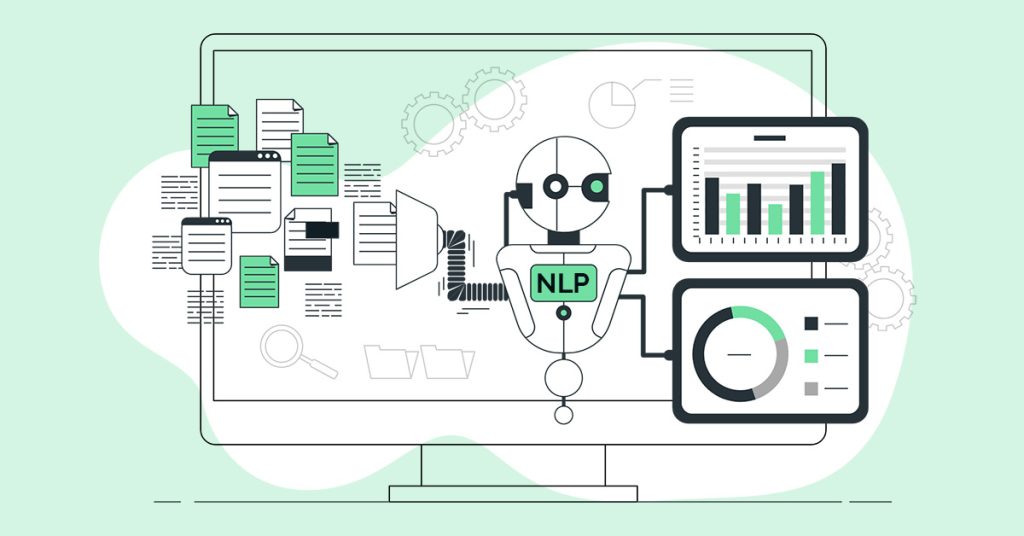- Conversational Marketing with Chatbots : Engaging Customers
- What is Conversational Marketing ?
- Role of Chatbots in Conversational Marketing :
- How Conversational Marketing Chatbots Function ?
- Types of Conversational Marketing Chatbots :
- Key Features of Effective Conversational Marketing Chatbots :
- Using Botbuz for Conversational Marketing Success :
Conversational Marketing with Chatbots : Engaging Customers
Conversational marketing chatbots are AI-powered chat programs. It can have conversations with website visitors, app users, or social media followers. Imagine a friendly and informative virtual assistant who can answer questions, provide support. It even guides customers towards purchases. That’s the power of a conversational marketing chatbot.
Now, why is conversational marketing so important? In today’s digital world, customers crave real-time engagement. They expect instant answers & personalized experiences. Chatbots can fill this gap by providing 24/7 availability. It interacts with customers in a natural, conversational way.
What is Conversational Marketing ?
Conversational marketing flips the traditional marketing funnel on its head. It does not push messages out to a broad audience. Rather it focuses on creating a two-way dialogue with potential and existing customers.
Conversational marketing is a dialogue-driven marketing strategy. It uses real-time interactions on various channels like live chat, messaging apps & social media. It aims to engage customers in a personalized and convenient way. Thus, fostering trust & building relationships.
Key Components and Principles :
Two-way communication : Conversational marketing prioritizes back-and-forth interactions. It allows the customers to ask questions and get immediate answers.
Personalized experiences : Chatbots and live chat agents can tailor conversations by using customer data and preferences. It can even provide recommendations for each individual.
Seamless omnichannel experience : Customers expect consistent and connected experiences across different platforms. Thus, Conversational marketing strives to deliver a smooth flow of communication. It is regardless of the channel used.
Focus on building relationships : Conversational marketing goes beyond just lead generation. It aims to build trust and long-term relationships with customers through ongoing engagement.
Evolution and Adoption in Modern Marketing :
The rise of social media, messaging apps, and mobile browsing has led to a shift in customer behavior. People expect instant communication and personalized interactions. Conversational marketing has emerged as a response to this shift. It offers a more engaging and effective way to connect with customers.
Here are some key factors driving the adoption of conversational marketing :
Growth of Messaging Apps : Platforms like WhatsApp and Facebook Messenger have become primary communication channels. Thus, making conversational marketing a natural fit.
AI Advancements : Chatbots with artificial intelligence allow for more natural and engaging conversations. Thus, improving the overall customer experience.
Omnichannel Marketing : Conversational marketing integrates seamlessly with other marketing strategies. Thus, creating a unified and consistent customer journey.
Role of Chatbots in Conversational Marketing :
Conversational marketing chatbots are the workhorses of this customer-centric approach. They act as virtual brand ambassadors. It constantly engages with website visitors, app users, and social media followers. But how exactly do they facilitate conversational marketing ?
Chatbot Advantage : Powering Conversational Marketing
Always-on Availability : Unlike human representatives, chatbots are never offline. They can answer basic questions & provide support. It even initiates conversations anytime a customer is on your website or messaging app.
Personalized Interactions : Chatbots can collect data and preferences during conversations. Thus, allowing them to tailor their responses and recommendations to each customer’s needs.
Automated Tasks : Chatbots can handle repetitive tasks. It can schedule appointments, answer FAQs, and collect lead information. Thus, freeing up human agents for more complex interactions.
Conversational User Interface : Chatbots utilize a natural language interface. It allows customers to interact in a way that feels comfortable and familiar.
Advantages of Chatbots in Customer Interactions :
Improved Customer Satisfaction : By providing quick and helpful support, chatbots can significantly improve customer experience and satisfaction.
Increased Lead Generation and Qualification : Chatbots can engage website visitors, answer their initial questions and gather valuable information. It helps to qualify them as potential customers.
Cost-Effectiveness : Chatbots can automate many customer service tasks. It reduces reliance on human agents and lowers operational costs.
Data Collection and Insights : Chatbot interactions provide valuable data on customer behavior and preferences. It can be used for marketing personalization and product development.
24/7 Global Reach : Chatbots can overcome language barriers and time zone differences. Thus, allowing you to engage with customers around the world at any time.
How Conversational Marketing Chatbots Function ?
Conversational marketing chatbots are constantly evolving. With advancements in NLP and machine learning, chatbots are leading to more sophisticated and natural interactions. By understanding the technology behind them, you can leverage chatbots to create a more engaging and personalized customer experience.
For example A user asks the chatbot, “What are your best laptops for gaming ?”. The NLP engine identifies the user’s intent as a product inquiry. The chatbot then accesses product data and utilizes machine learning. It helps to identify laptops with high ratings for gaming performance. Finally, it generates a response that recommends specific laptops based on the user’s needs.
Types of Conversational Marketing Chatbots :
Conversational marketing chatbots come in two main types: rule-based and AI-powered. Each has its strengths and weaknesses, making them suitable for different situations. Let’s delve into their functionalities :
1. Rule-Based Chatbots :
These chatbots operate on a predefined set of rules and responses. They utilize decision trees to navigate conversations based on keywords and user input.
Strengths :
- Simple to develop and implement
- Ideal for handling basic inquiries with predictable answers (e.g., FAQs, business hours)
- Cost-effective solution
Weaknesses :
- Limited understanding of natural language
- Can’t handle complex questions or deviate from pre-programmed flows
- Repetitive interactions can become tedious for users
Use Cases :
- Qualifying leads by collecting user information
- Scheduling appointments
- Answering frequently asked questions
- Providing product recommendations based on simple user preferences
Example : A restaurant chatbot might use a rule-based flow to answer questions about location, operating hours, and reservation options. Users can choose from a menu of options. They can type in keywords like “reservations” or “menu” to trigger pre-programmed responses.
2. AI-Powered Chatbots :
These chatbots leverage Artificial Intelligence (AI), particularly Natural Language Processing (NLP). It helps to understand the nuances of human language. They can learn and adapt over time, offering more dynamic and engaging conversations.
Strengths :
- Can understand natural language and respond to complex questions
- Can learn from past interactions and improve over time
- Offer a more personalized and engaging user experience
Weaknesses :
- More complex and expensive to develop and maintain
- Reliant on the quality of training data for accurate responses
- May require ongoing human oversight to ensure they stay on track
Use Cases :
- Providing personalized customer support by understanding user intent
- Qualifying leads based on complex criteria and open-ended questions
- Upselling and cross-selling products based on user behavior and purchase history
- Offering real-time conversation with a virtual assistant
Example : An e-commerce chatbot uses AI to understand a customer’s search query and recommend relevant products based on their past browsing behavior & purchase history. It can also answer open-ended questions about product features and specifications, creating a more natural and helpful shopping experience.
Key Features of Effective Conversational Marketing Chatbots :
Conversational marketing chatbots are powerful tools. But their effectiveness hinges on specific features that enhance user experience. Here are some key elements of successful chatbots :
1. Personalization and Context-Awareness :
Personalization : Effective chatbots go beyond generic responses. They should leverage customer data and past interactions to personalize greetings, recommendations and support. This builds rapport and fosters a sense of connection with the user.
Context-Awareness : Chatbots should understand the context of a conversation. They should be able to remember previous interactions and tailor their responses accordingly. This creates a more natural and engaging dialogue for the user.
2. Multichannel Integration :
Omnichannel Experience : Customers expect consistent interactions across different platforms. Your chatbot should be accessible on your website, messaging apps, and social media channels. Thus, providing a seamless experience regardless of where the conversation begins.
3. Seamless Handoff to Human Agents :
Knowing When to Step Aside : Chatbots excel at handling basic inquiries and tasks. However, complex issues or situations require human empathy. They should be able to seamlessly hand off the conversation to a live customer service agent.
Contextual Handover : When handing off to a human agent, the chatbot should provide all relevant context from the conversation. This ensures a smooth transition and avoids the customer having to repeat information.
Using Botbuz for Conversational Marketing Success :
What is Botbuz ?
Botbuz chatbot helps businesses to create and deploy conversational marketing chatbots. They offer a range of features to simplify the process. Thus, making chatbot development accessible even for those without extensive coding experience.
Ways you can use Botbuz for conversational marketing :
Lead generation and qualification : Use your Botbuz chatbot to capture leads by collecting user information during website visits or chat conversations. You can also qualify leads by asking relevant questions and directing them to the appropriate sales representatives.
Customer support : Botbuz can help you create a chatbot that handles basic customer support inquiries, answers frequently asked questions, and resolves simple issues. Thus, freeing up human agents for more complex situations.
Personalized marketing : By integrating with your CRM system, your Botbuz chatbot can personalize interactions by accessing customer data and purchase history. This allows for targeted product recommendations and marketing messages.
24/7 availability : Your Botbuz chatbot can be available 24/7, providing customer support and answering questions even outside of regular business hours.
Conclusion :
In today’s digital landscape, customers crave connection and personalized experiences. Conversational marketing with chatbots offers a powerful solution. It fosters real-time interactions and builds lasting relationships. By leveraging platforms like Botbuz, you can create intelligent virtual assistants that engage your audience, answer their questions, and guide them through the customer journey.
Conversational marketing chatbots are the future of customer engagement. As AI technology continues to evolve, these chatbots will become even more sophisticated. Thus, blurring the lines between human and machine interaction. By embracing conversational marketing and utilizing tools like Botbuz, you can position your brand at the forefront of customer experience. Thus, driving growth and success in the age of conversation.




